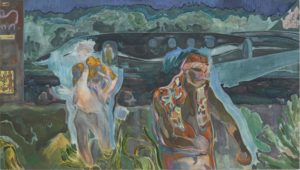
Michael Armitage
Diamond Platnumz, 2016.
About:
Michael Armitage’s paintings weave multiple narratives that are drawn from historical and current news media, internet gossip, and his own ongoing recollections of Kenya, his country of birth.
Living and working between London and Nairobi, Armitage paints with oil on Lubugo, a traditional bark cloth from Uganda, which is beaten over a period of days creating a natural material which when stretched taut has occasional holes and coarse indents. As noted by the artist, the use of Lubugo is at once an attempt to locate and destabilize the subject of his paintings.
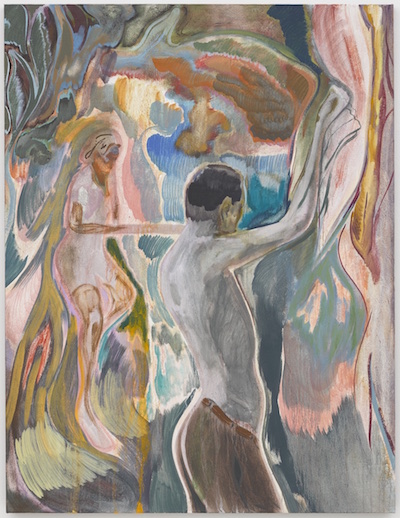
Clarinet, 2015.
Applying the paint in layers, Armitage scrapes, revises and repaints his compositions. The visual iconography of East Africa lies at the heart of his practice: its urban and rural landscape, colonial and modern vernacular architecture, advertising hoardings, lush vegetation and varied animal life. Undermining this rich color palette and dream-like imagery, however, is a quiet exposition of Kenya’s sometimes harsh reality: its politics, social inequalities, violence and extreme disparities in wealth. In turn, Armitage reflects on the more absurd aspects of the everyday, commenting on both society and the surrounding natural environment – evoked with a lyrical and phantasmagorical vision.
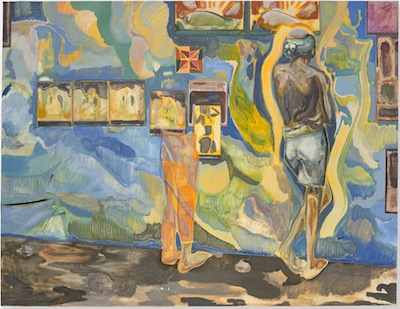
Wait, 2015.
Armitage claims that ‘Painting is a way of thinking through something, trying to understand an experience or an event a little better and trying to communicate something of the problem to others’. In the painting Hornbill (21st – 24th September 2013) (2014), Armitage depicts one of the four terrorists who carried out the Westgate Shopping Mall attack, in which 67 people were killed including a group of children who were filming a cookery program in the mall at the time. Armitage makes reference to this loss, by implanting the symbol of the Hornbill bird repeatedly across a tiled wall to the foreground of this armed figure; as according to West African myth Hornbills bury their dead in the beak of their bill. Accident (2014) looks back on a scene of personal trauma for the artist: a plane crash he experienced as a teenager, with his father and uncle, deep in the Kenyan bush – while ‘And so it is’ (2015) explores the all too familiar media image of political manipulation, where a shadowy figure gives an address behind a pair of microphones to an audience.
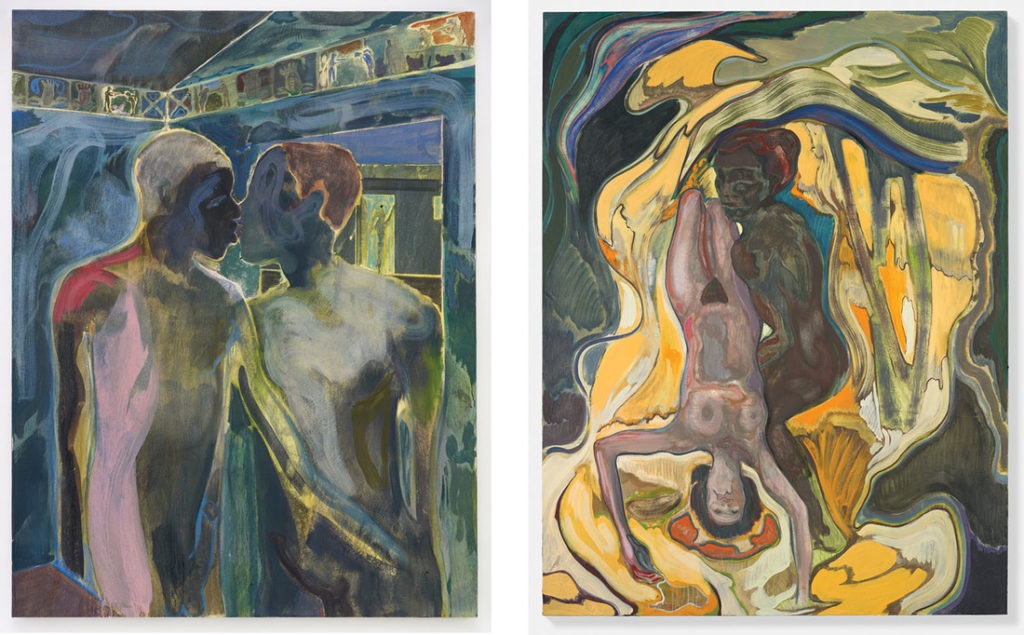
Kampala Suburb, 2014/Mangroves Dip, 2015.
As Catherine Lampert describes: ‘His approach is synthetic but various in terms of composition; sometimes shapes flow, occasionally images are cut and pasted, he experiments with florid colour and sinuous line, and eventually the elements click into place….This instability exists in part because the stories that inform Armitage’s paintings have been filtered by inherently unreliable voices.’ Using a flattened perspective Armitage’s figuration evolves into passages of pure abstraction, and then back again seamlessly within one painting creating works that are both romantic and synchronous, offering up various narrative threads, only to then unravel them like a resonant myth or legend.
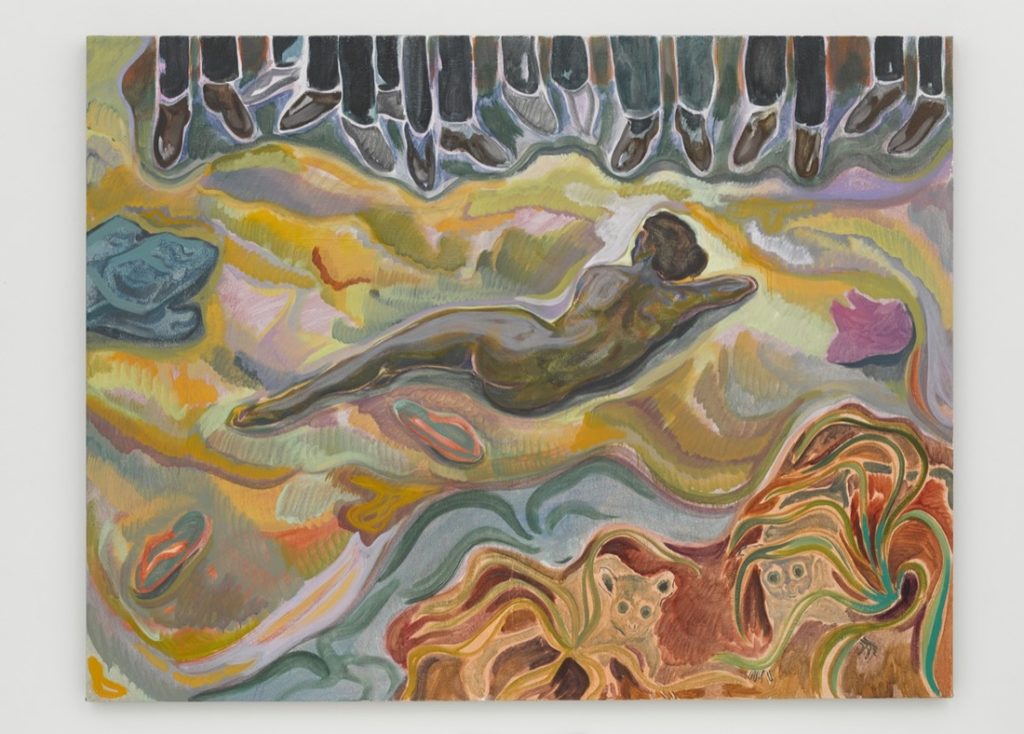
My dress my choice, 2015.
Michael Armitage was born in 1984 in Nairobi, Kenya and lives and works in London. He received his BA in Fine Art from the Slade School of Fine Art (2003 – 07) and has a Postgraduate Diploma from the Royal Academy Schools (2007 – 10). Group exhibitions include ‘100 Painters of Tomorrow’, Beers Contemporary, London (2014); ‘Tomorrow : London’, South London Gallery (2014) ; ‘Connecting Worlds’, UBM, London (2013); ‘Myth and Market’ (with John Tiney), Studio 1 :1, London (2013) ; ‘Drawing Biennial 2013’, Drawing Room, London (2013) ; ‘RA Schools Show’, Royal Academy Schools Studios, London (2010) ; and ‘Ascension’, Simon Oldfield, London (2008). Current exhibitions include ‘La vie moderne’, the 13th Lyon Biennale curated by Ralph Rugoff, and ‘Painting Is Not Doomed To Repeat Itself’, Hollis Taggart Galleries, New York.(text White Cube London)
